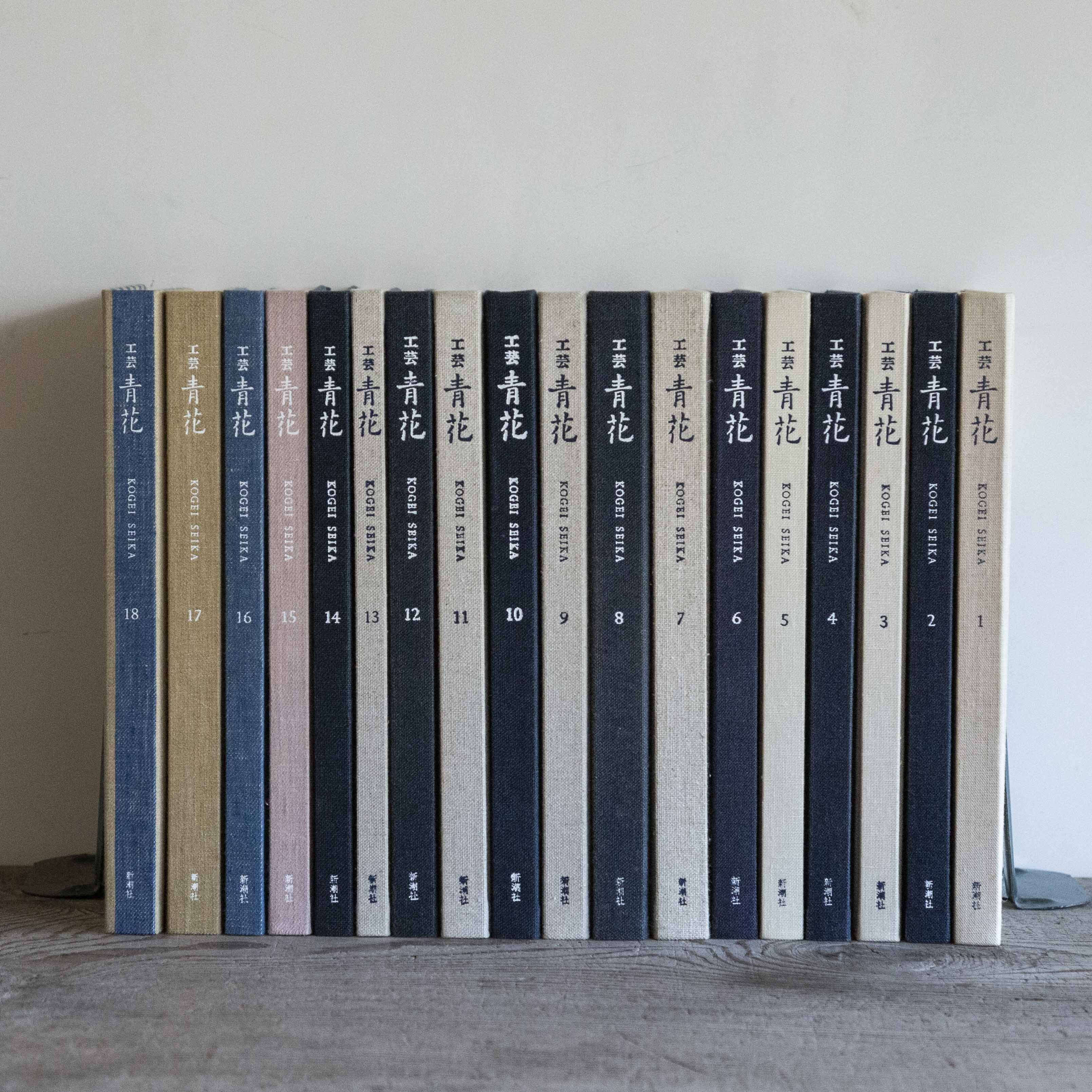
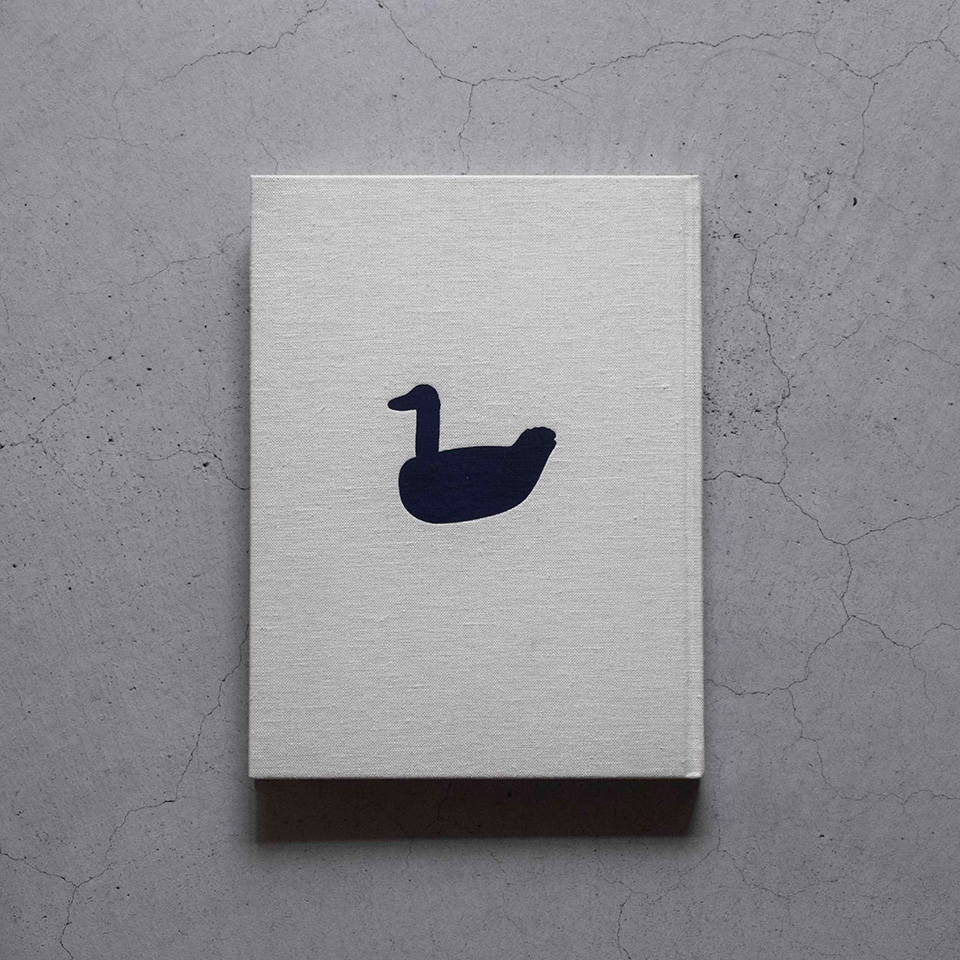
『工芸青花』5号
■2016年4月30日刊
■A4判|麻布張り上製本|見返し和紙(楮紙)
■カラー168頁|インドの古布カンタを貼付したページあり
■限定1200部|12,000円+税
■御購入はこちらから
https://shop.kogei-seika.jp/products/detail.php?product_id=88
Kogei Seika vol.5
■Published in 2016 by Shinchosha, Tokyo
■A4 in size, linen cloth coverd book with endpaper made of Japanese paper (kozo)
■168 Colour Plates, Frontispiece with a piece of Kantha on frontispage
■Each chapter is accompanied by an English summary
■Limited edition of 1200
■12,000 yen (excluding tax)
■To purchase please click
https://shop.kogei-seika.jp/products/detail.php?product_id=88
目次 Contents
1 板と私
My Favourite Boards
・板極道の入口で 小澤實
・歴史の形見 青井義夫
・漆喰とバスク 内田鋼一
・朝鮮の餅板 大塚潔
・奈良古材 川瀬敏郎
・茶の敷板 木村宗慎
・謙虚さ 坂田和實
・長い床の間 高木孝
・板切れの美 吉田昌太郎
2 小川待子 やきものと言葉以前
Machiko Ogawa: Ceramics and the World Before Language Existed
・踏みだす人 井出幸亮
3 鑑賞陶器のはじまりと本
The Beginning of Appreciative Ceramics and their Catalogues
・繭山龍泉堂訪問記 森岡督行
・大正の新風 川島公之
・作品解説 川島公之
4 意中の美術館
Museums on My Mind
・アカデミア美術館の巻 中村好文
5 うつわのはじまり
The Origin of Utsuwa
・東北古椀 赤木明登
精華抄
1|板と私
My Favourite Boards
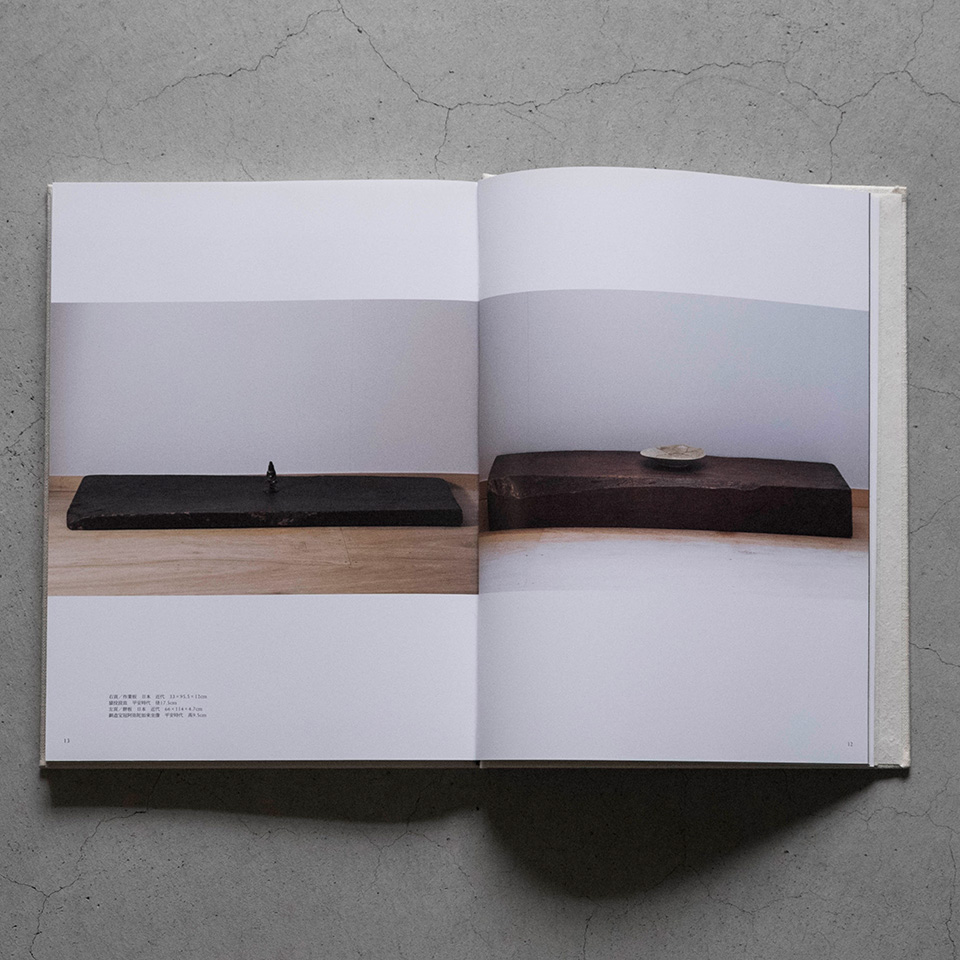
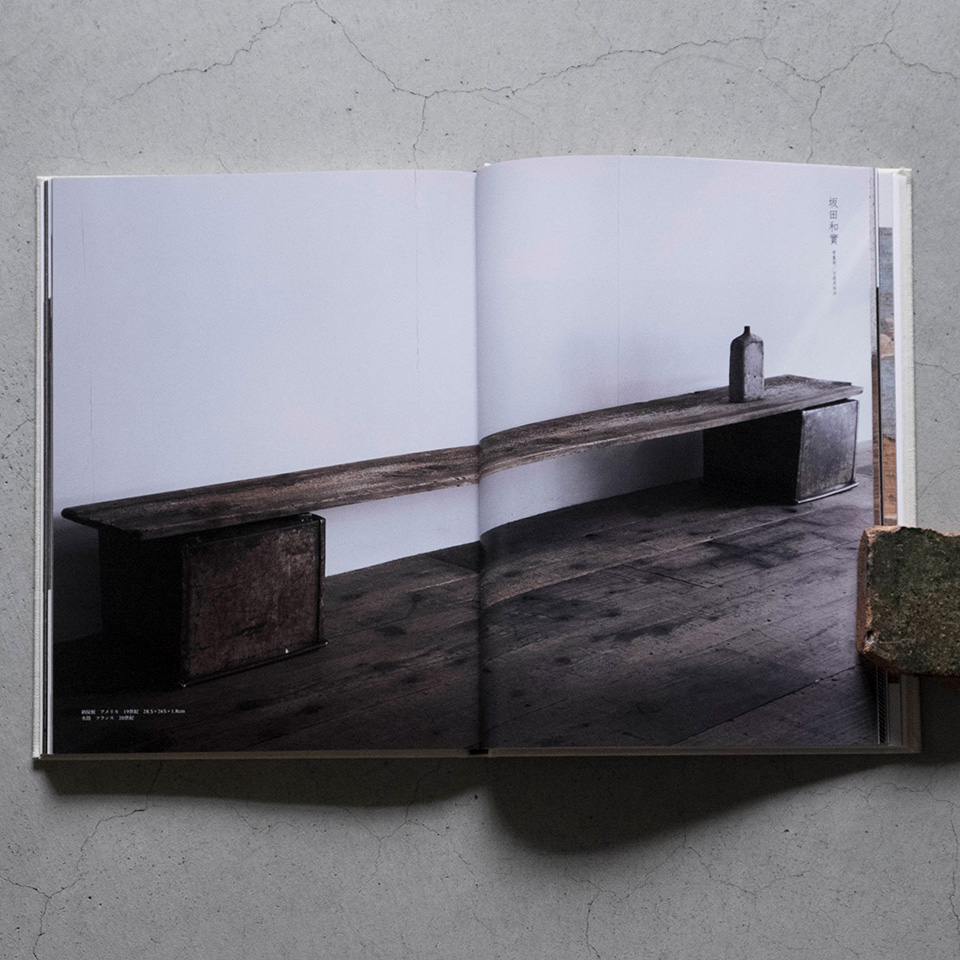
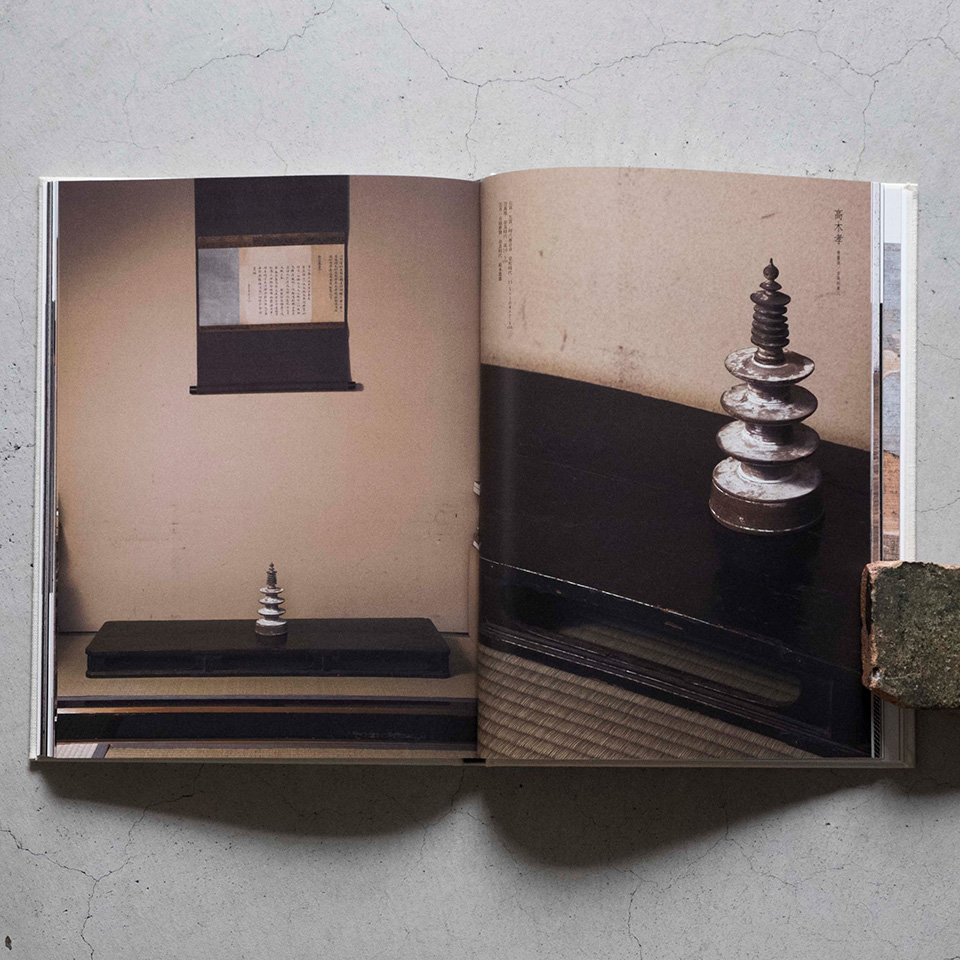
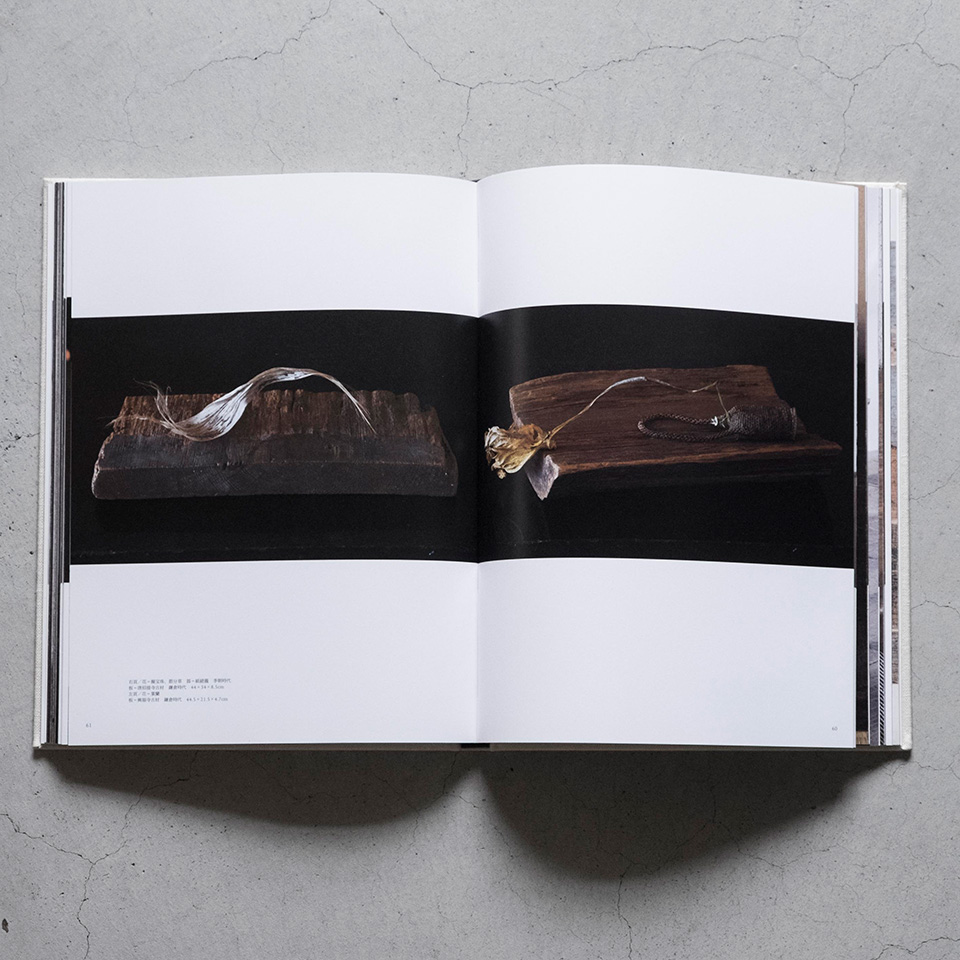
板の特集。ほとんどが木の板です。物をおく敷板を取材するつもりではじめましたが、壁にかけたり立てかけたりして絵のようにみる板もありました。千数百年まえから現代のものまで、日本の板が多いですが、アジア、アメリカ、ヨーロッパの板もあります。
きっかけは俳人で骨董好きの小澤實さんの言でした。「板なんかとりあげたらおもしろいんじゃない?」。たしかに。物のうつりは敷板によってずいぶんかわります。物のみえかたは不変ではありません。そのことに、日ごろより気を配しているにちがいない人々の顔が思いうかびました。
8人に、所持するなかで好きな板をみせてもらいました。物とのつりあい、とりあわせもみどころです。S
In this issue, we feature boards, mainly, wooden boards. When I started my research, I meant to deal with those to put things on, but I came across many other kinds including ones leaning on the wall or the ones hung like paintings. Here we have gathered boards across a wide range of time and geography. Ancient boards from a thousand and hundreds years ago are placed together with contemporary ones. Most of them are from Japan but many are from Asia, North America and Europe.
It was Minoru Ozawa, a haiku poet and an antiquarian, who suggested the theme. One day, he said, ‘Perhaps, it might be interesting to feature boards’. Why not! How you see an object is considerably affected by its surroundings, in particular by the surface on which or against which the object is placed. Immediately, faces sprung up in my mind, faces of those who know well about those effects.
Here we have the most favourite boards of eight ‘experts’. It was fascinating to see what they chose for their favourite boards as their combinatory effects with the objects they have chosen. (S)
2|小川待子 やきものと言葉以前
Machiko Ogawa: Ceramics and the World Before Language Existed
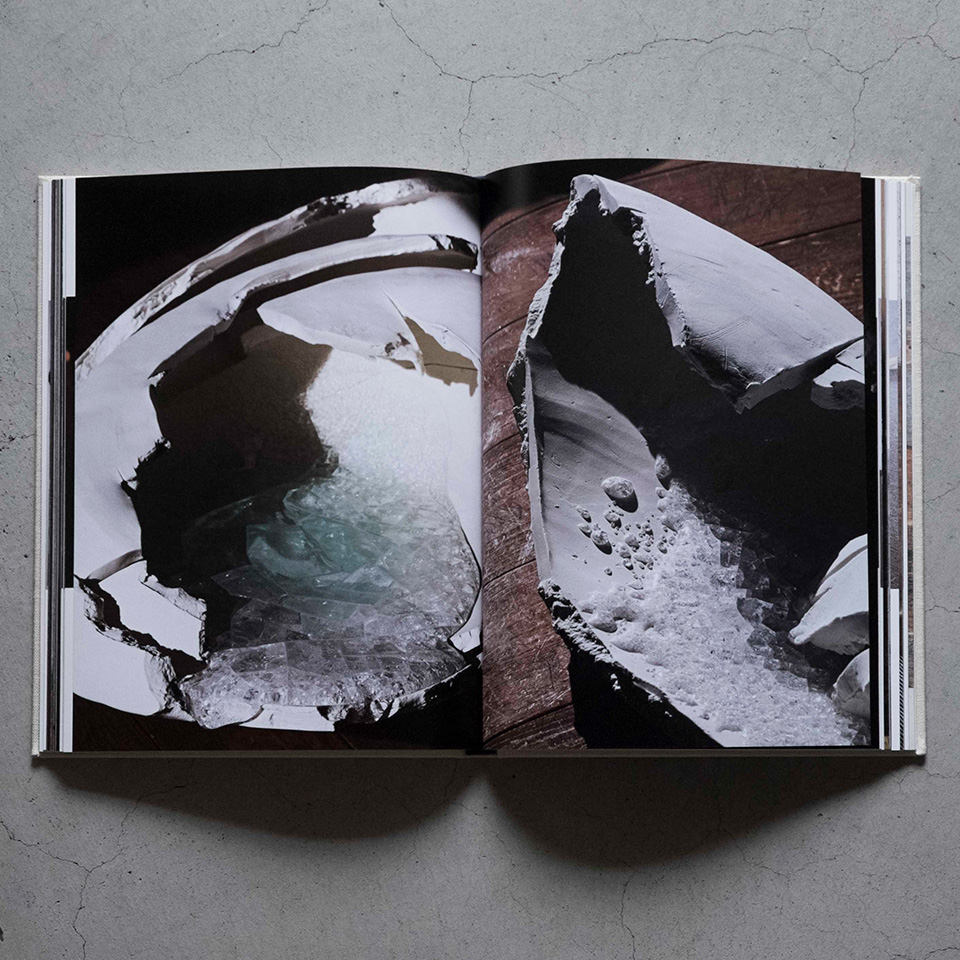
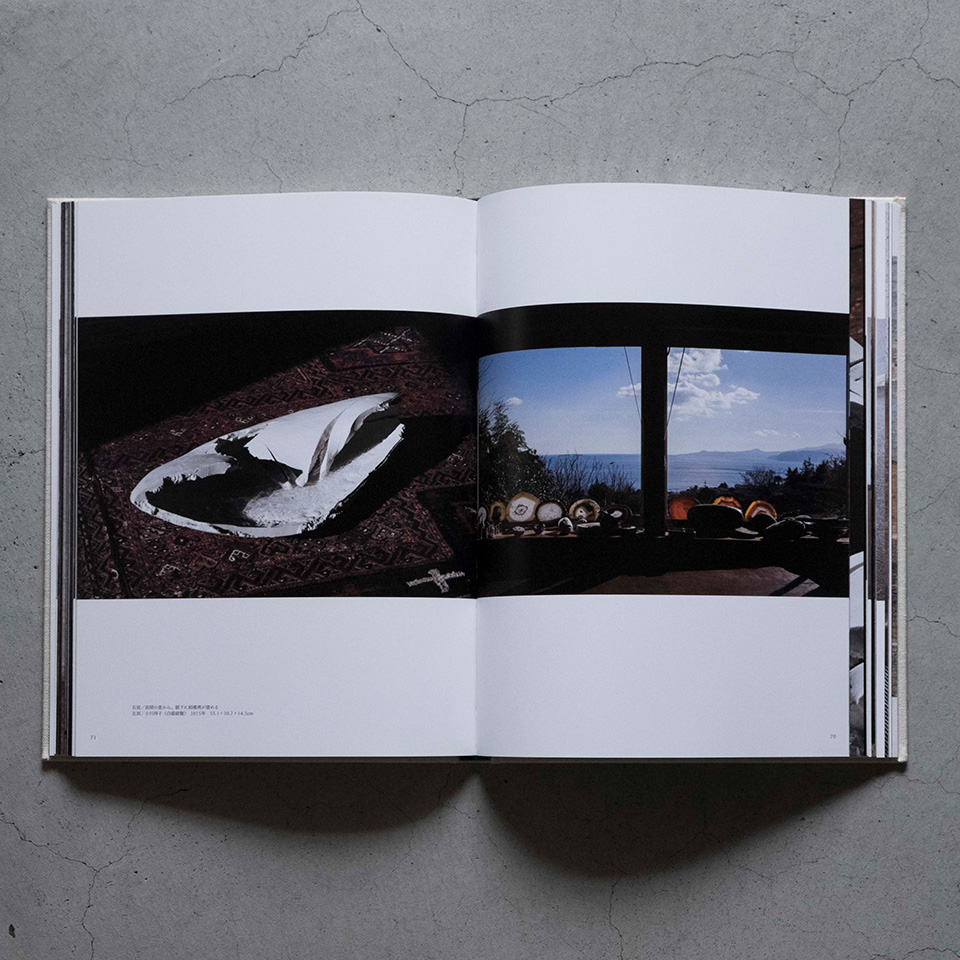
陶芸家の小川待子さんは1946年札幌生れ、東京藝大卒業後パリの工芸学校でまなび、その後夫の人類学者川田順造氏とともに西アフリカへわたり、彼地のやきものづくりにもまなびます。神奈川県立近代美術館や豊田市美術館での個展、日本陶磁協会賞や芸術選奨文部科学大臣賞の受賞など、大家と称すべき作家ですが、今回の記事の動機は、そうしたこととはかかわりのないものでした。
小川さんのやきものをみていると、とおくをみている気持になります。とてもとおくです。たとえば人が自然を意識しはじめたころのような。近視眼的に語る工芸とはべつの工芸がここにあって、なにかを思いださせてくれます。S
A ceramic artist, Machiko Ogawa, was born in Sapporo, Hokkaido (Japan) in 1946. After graduating from Crafts Course of Tokyo National University of Fine Arts and Music, she went to Paris and attended classes at the École nationale supérieure. Then she was off, with her husband Junzo Kawada, an anthropologist to West Africa where she studied ceramics at various villages. She is one of the leading ceramic artists in Japan. She held exhibitions at many established museums such as the Museum of Modern Art in Kamakura and Toyota municipal Museum of Art, Aichi, and was awarded the Minister of Education Award for Fine Arts in Japan. However, these were not something which compelled me to write this article.
When looking at the ceramics of Ogawa, I feel as if I am looking at somewhere far away. Very far. Far into the past, when humans began to realize their surrounding nature. Her ceramics are totally different from other crafts of short-sighted nature. Her work always makes me recall something, something unable to be expressed by words. (S)
3|鑑賞陶器のはじまりと本
The Beginning of Appreciative Ceramics and their Catalogues
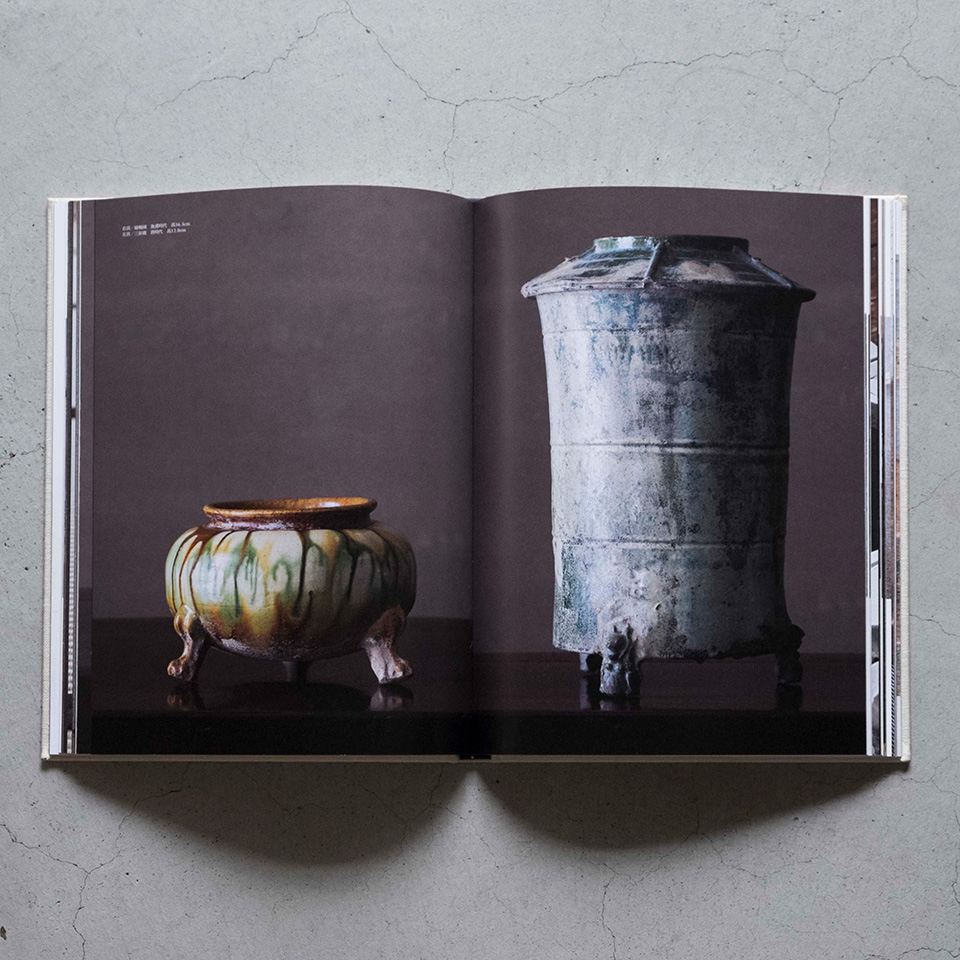
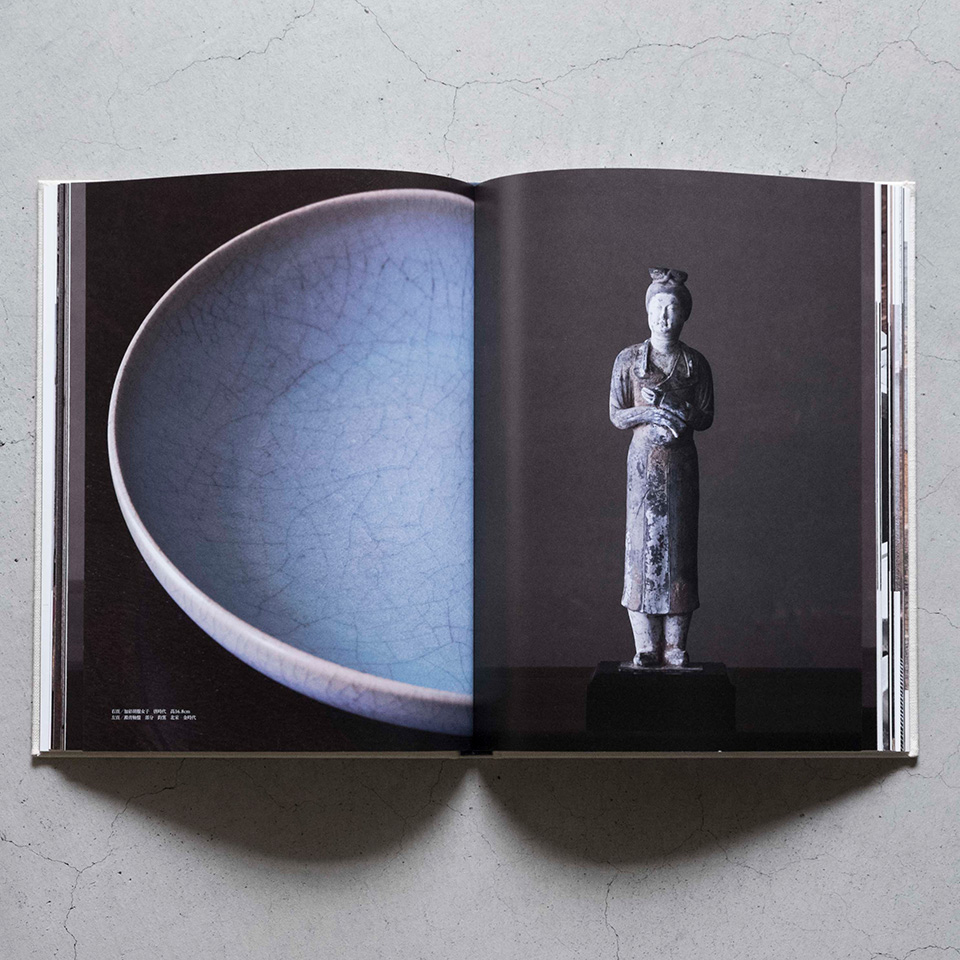
森岡書店の森岡督行さんには「骨董と本」というテーマで、これまでも取材と執筆をお願いしてきました。今回は東京京橋の古美術商「繭山龍泉堂」をたずねます。
龍泉堂の創業は明治38年(1905)、いわゆる「鑑賞陶器」の草分けです。鑑賞陶器という概念は近代以後のもので、古陶磁を(茶の湯のように)道具としてもちいるだけでなく、つかわずとも美術品として鑑賞する態度、またその物のことをいいます。主流は中国陶磁であり、収集に先行していたのは欧米の愛陶家でした。20世紀初めのことです。
記事の前半は龍泉堂の書架から、往時は眼の「手本」だったという欧州のコレクション図録を、後半は龍泉堂の川島公之さんに、鑑賞陶器らしい鑑賞陶器(中国陶磁)を時代順にならべてみせていただきました。S
In this series, Yoshiyuki Morioka from Morioka-Shoten, goes to see the bookshelves of antique lovers, selects a book from their collection and interviews them. In this fifth issue, he made a visit to an antique dealer, Mayuyama Ryusendo in Kyobashi, Tokyo.
Ryusendo was founded in 1905, and is a pioneer in so-called ‘appreciative ceramics’. The idea of appreciative ceramics cannot be traced back before the end of nineteenth century. Before then, ceramics were basically for practical only. The term is applied to the ancient ceramics which were aesthetically appreciated as the works of art, rather than those actually used by the Tea ceremony masters. The term is also applied to the field on such ceramics. Of these, the most dominant was the Chinese ceramics, which Western collectors sought after in the early years of last century before Japanese collectors turned their eyes on them.
The first half of the article is on the catalogues of ceramics from collections in Europe, taken from the bookshelf of Ryusendo. Back then, the western catalogues acted as a kind of guideline for appreciation. The other half is dedicated to the appreciative ceramics from the collection of Ryusendo. Tadashi Kawashima from Ryusendo showed us the very best of the appreciative ceramics (mainly Chinese porcelain) in chronological order. (S)
4|意中の美術館
Museums on My Mind
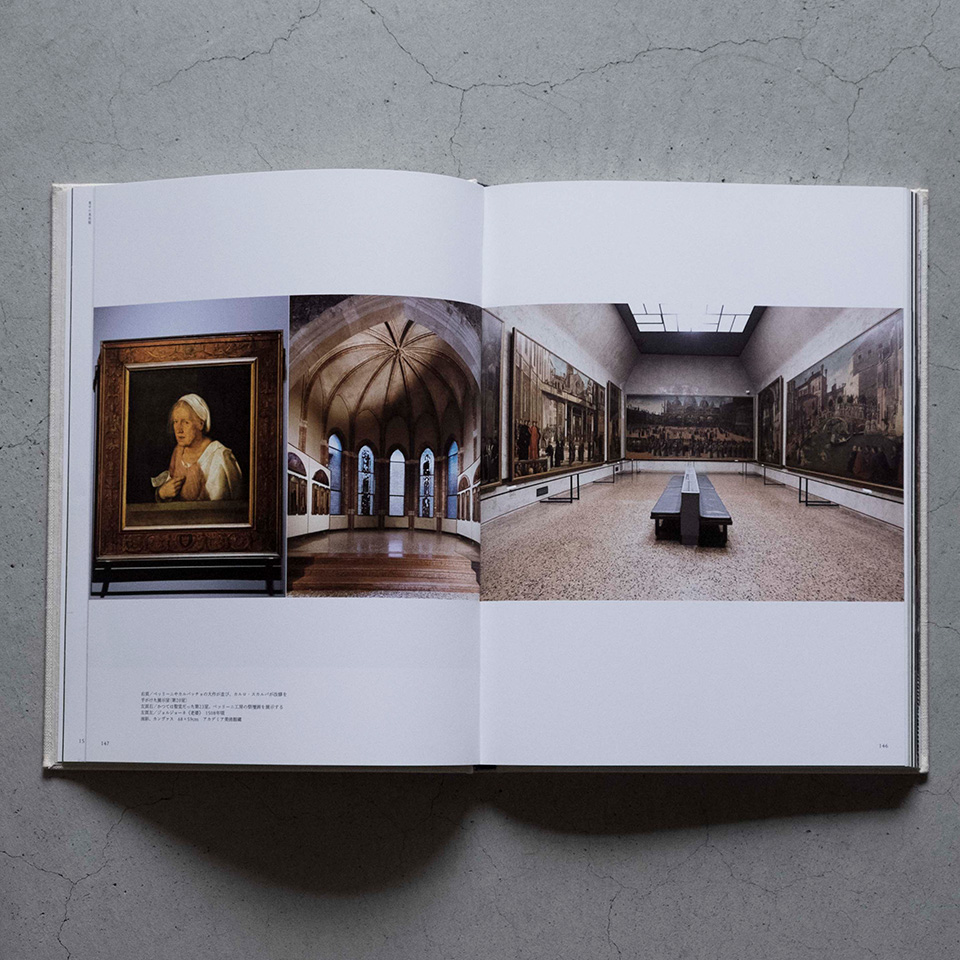
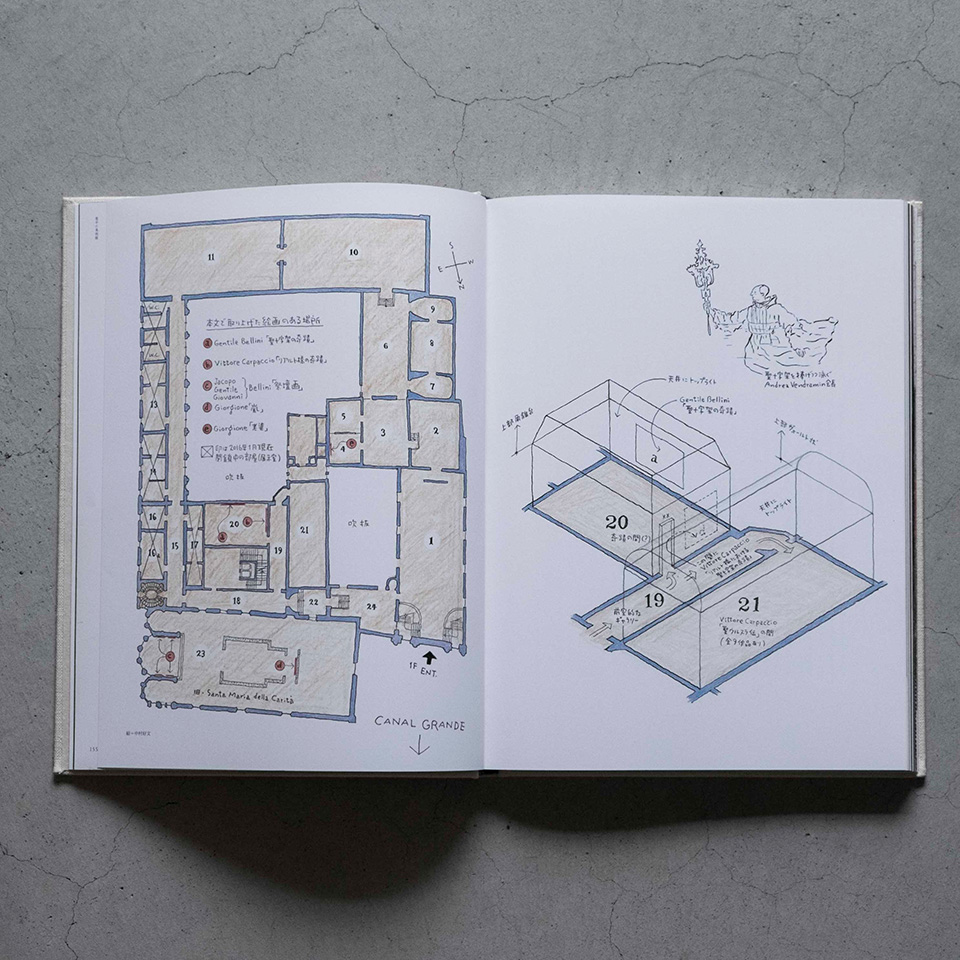
建築家の中村好文さんによる美術館紀行、今回はヴェネツィアのアカデミアです。カルパッチョ、ジョルジョーネ、ティントレット、ヴェロネーゼ等々、ヴェネツィア派絵画の宝庫として知られる美術館で、建造は1750年、当初は修道院内にあった美術学校のギャラリーでした(1817年に公開)。
世界中を旅してきた中村さんにとっておそらくヴェネツィアは意中の都市であり、意中の美術館であるアカデミアには意中の画家(ジェンティーレ・ベッリーニ)と意中の建築家(カルロ・スカルパ。改修を手がけた)の仕事がのこされています。それらを味到するよろこびが、しずかにつたわってきます。S
In this series, Yoshifumi Nakamura, an architect, visits his favourite museums around the world. This time, he chose the Gallerie dell’Accademia in Venice. It is renowned for a great collection of Venetian Renaissance paintings, especially those by Carpaccio, Giorgione, Tintoretto, and Veronese. Originally, it was founded in 1750 as an art gallery for Venetian academy of art, housed in the monastery of Scuola della Carità. It was first open to the public in 1817.
Even for Nakamura who has travelled all around the world, visiting the Gallerie dell’Accademia is very special. It is located in his favourite city, Venice, it exhibits his favourite painting by Gentile Bellini, and was renovated by his favourite architect, Carlo Scarpa. One can sense the joy of cherishing his favourites between the lines. (S)
5|うつわのはじまり
The Origin of Utsuwa
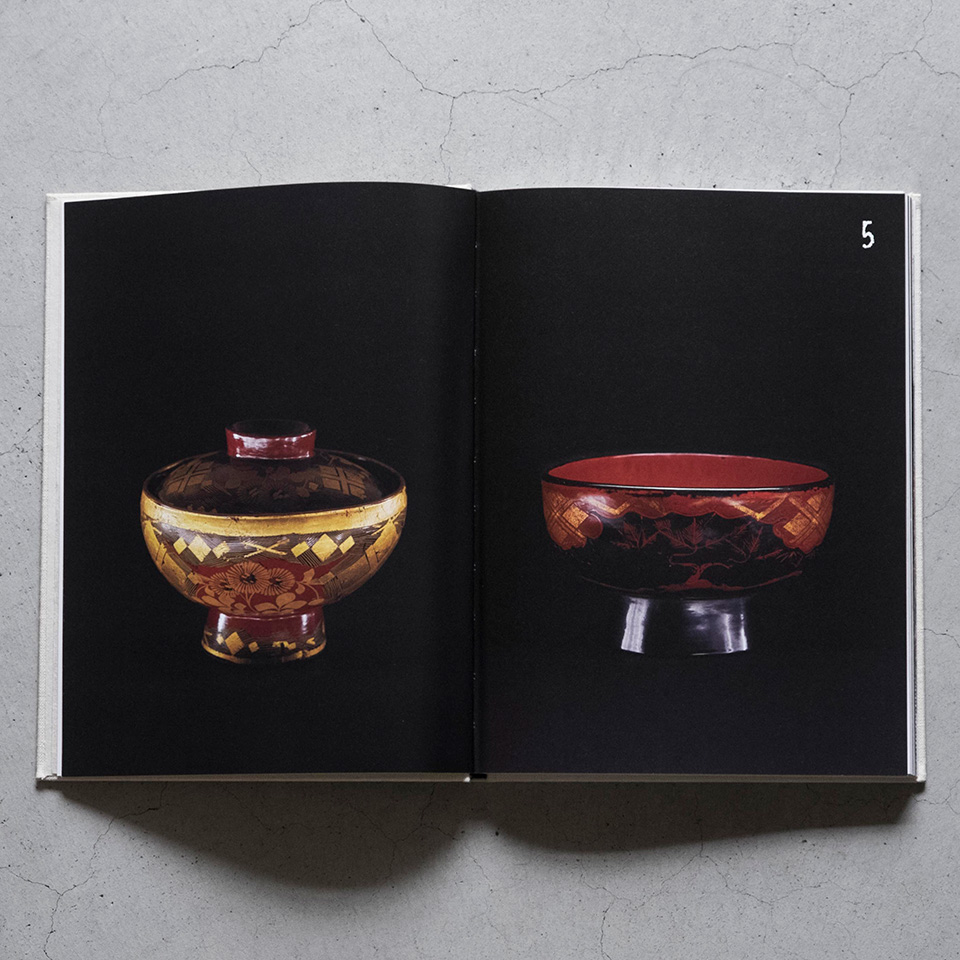
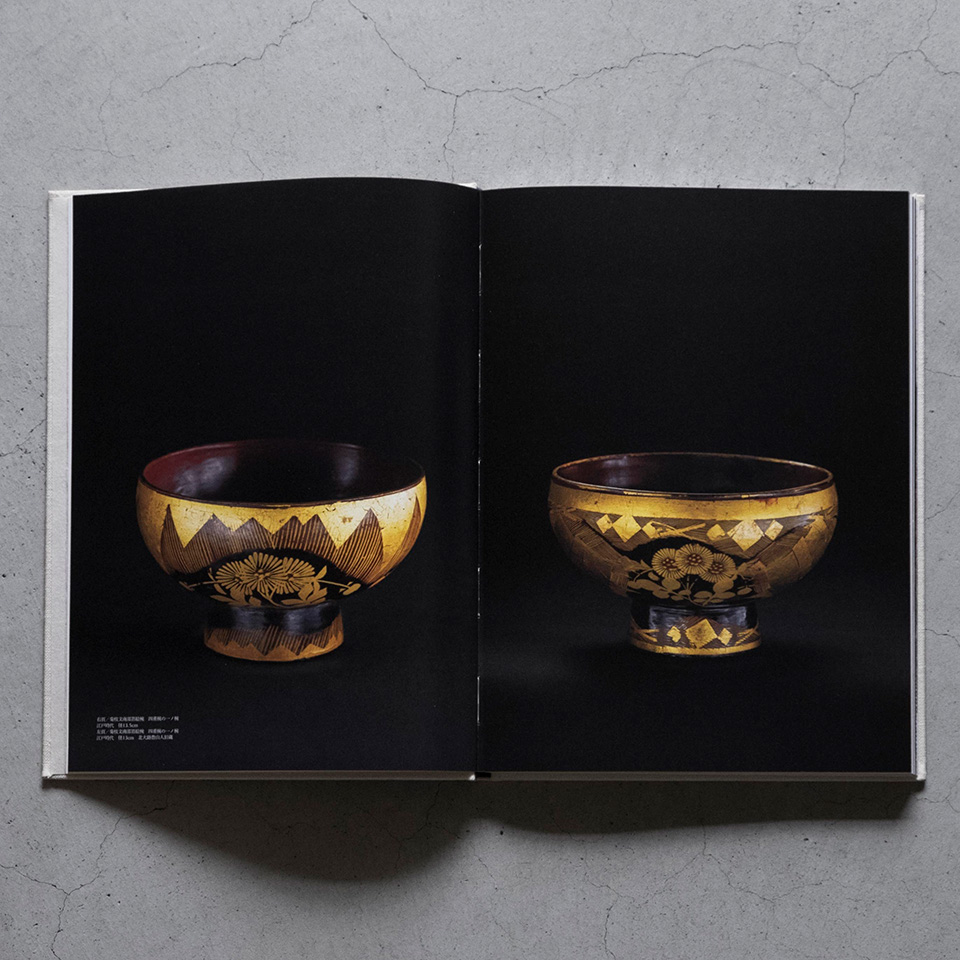
輪島の塗師の赤木明登さんはこれまで二度にわたり、縄文土器について考察してきました。あの文様は籠の編目の「写し」なのか、それとも蛇すなわち生命力の「象徴」なのか。結論はでていません。そして今回は近世の東北古椀に話がとびます。それらにも縄文土器とおなじ「しるし」があるというのです。
うつわとはなにかと問うことは、料理とはなにか、生死とはなにかを問うことにつうじる、という赤木さんの器作家としての直感に、まだしばらく、ついてゆくつもりです。S
Akito Akagi, an artist of Japanese lacquerware based in Wajima, has written two essays for Kogei Seika on Jomon vessels. The meaning of the rope-like patterns on the Jomon vessels is not known for certain. Some say that they are imitation of the baskets they used to use. Others see it as the serpent, the symbol of life. In search of clues for thought, he flew to Tohoku to see the ancient vessels from Momoyama-period which bear the typical patterns of the Jomon vessels.
According to Akagi, the quest for the origins of Utsuwa (vessels) necessarily leads to the fundamental questions such as ‘what is to cook?’ or ‘what is the life and death?’. I am going to follow him a while, relying on the instinct of an artist making Utsuwa. (S)

